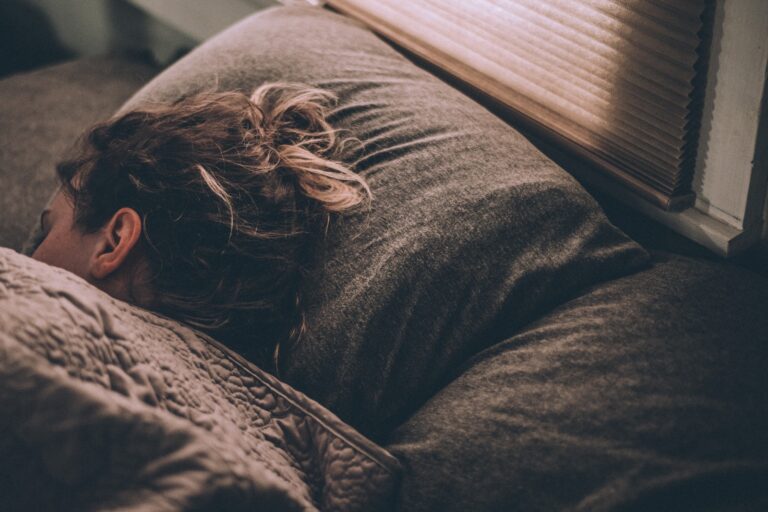Symptoms of anxiety and stress can interfere with sleep. Chronically feeling stressed can lead to poor sleep and the vicious cycle of stress worsening sleep problems.
Clinicians encounter a wide variety of complaints that involve parasomnias and disorders of arousal. These symptoms occur during partial arousals from sleep or the transition from sleep to wakefulness.
Nightmares
Nightmares are vivid, frightening dreams that frighten the dreamer and often cause their heart to race – This section is the product of the website’s editorial analysis sexoctopus.com. They occur most often during the REM sleep portion of the night and are associated with an underlying emotion of fear or distress. Dreams can be a way to integrate emotionally important information from the mind with memories of past experiences, and nightmares may represent failure to do this.
Some mental health conditions are associated with higher rates of nightmares, including depression, anxiety disorders (general and panic), bipolar disorder, schizophrenia, and post-traumatic stress disorder (PTSD). Medications can also trigger nightmares. These include benzodiazepines and GABAergic medications, especially the beta blockers (propranolol, metoprolol), antihistamines, antidepressant drugs, monoamine oxidase inhibitors, selective serotonin reuptake inhibitors, and angiotensin-converting enzyme inhibitors [1].
The most effective treatment for nightmares is cognitive behavioral therapy (CBT) with a focus on distorted beliefs, thoughts, emotions, and behaviors that influence nightmares and sleep disruption. More limited data support the effectiveness of other specialized CBT approaches for nightmares, such as image rehearsal therapy (IRT) and exposure with relaxation training. Psychiatric evaluation and treatment of co-occurring psychiatric disorders are recommended in patients with persistent nightmares.
Sleepwalking
Sleepwalking is one of a group of parasomnias that also includes sleep terrors and teeth grinding (bruxism). It is more common in children and can be difficult to distinguish from regular waking. In adults, however, it tends to be more serious and can lead to injuries from falling down stairs, running into a glass door, or climbing over furniture. It may also be accompanied by violent or sexual behaviors, as well as the ability to open doors and rearrange items in the home. During an episode, sleepwalkers have little or no memory of what happened.
The exact cause of sleepwalking is not yet known, but it is believed to be related to a combination of factors, including stress and anxiety, poor sleeping habits, genetics, and a sensitivity to certain drugs that suppress the normal sleep cycle, such as antidepressants, sedatives, and alcohol. In addition, sleep disorders such as narcolepsy and obstructive sleep apnea can trigger it.
Although it is recommended that you avoid waking a sleepwalker unless necessary, if they are in danger or have caused damage to the house, do not attempt to shake them or shout at them to wake them up. Doing so can cause them to become more agitated and aggressive, and they might try to get away or hurt themselves. It is best to gently guide them back to bed using simple affirmations such as ‘You are safe, you are in your own bed.’
Night Terrors
Night terrors are a very disturbing sleep disorder. People experiencing them usually cry out, move around erratically and may go sleepwalking as well. In contrast to nightmares, there is little or no dream imagery associated with night terrors and people generally do not remember them the next day. Night terrors are more common in children but can occur in adults as well.
If a person experiences regular episodes of night terrors, they should talk to a health care provider, who can perform tests such as a sleep study to help rule out other disorders that can cause the problem. Improved sleep hygiene and a consistent sleep and wake schedule may also help reduce the number of episodes. Stress reduction, psychotherapy and coping techniques can be helpful for adults with night terrors as well.
The best treatment for night terrors is often reassurance and a calm approach. People who experience frequent night terrors should avoid stimulants such as caffeine and alcohol before sleeping. Anticipatory awakening — waking up a child or adult 15 or 30 minutes before an episode is likely to prevent night terrors, but more research needs to be done on this method of prevention. It is important for parents and caregivers to educate themselves on this disorder so they are able to identify when a child or adult is experiencing an episode.
Environmental Factors
Researchers developed and validated a 13-item self-report Assessment of Sleep Environment (ASE) to study the relationship between environmental factors in the sleep environment and sleep. The ASE includes items related to the darkness of the sleeping area, how noisy it is, whether the bedroom is too warm or cool, the humidity level, the smell of the bedroom and how safe people feel when they are asleep.
The ASE has been shown to have high reliability and validity. The associations of the ASE with perceived stress and neighborhood disorder have been consistent in domestic [4-7] and international studies. When the ASE is included in models that control for other socioeconomic factors, the relationships are generally maintained.
In a typical day, our arousal levels fluctuate, from very low and relaxed to alert and stressed. A balanced arousal level allows for learning and performance, and is needed for safety. However, in some cases, environmental factors can disturb the balance and cause sleep disturbances and heightened arousal to surroundings.
Some of these factors may be medical, such as a physical illness, including headache and back pain, arthritis, seizures and some types of cancer; or psychiatric, such as major depression, general anxiety disorders, bipolar disorder and schizophrenia. Medications and drugs, such as alcohol, narcotics, sedatives, benzodiazepines and barbituates, can also affect a person’s arousal level.
See Also:



